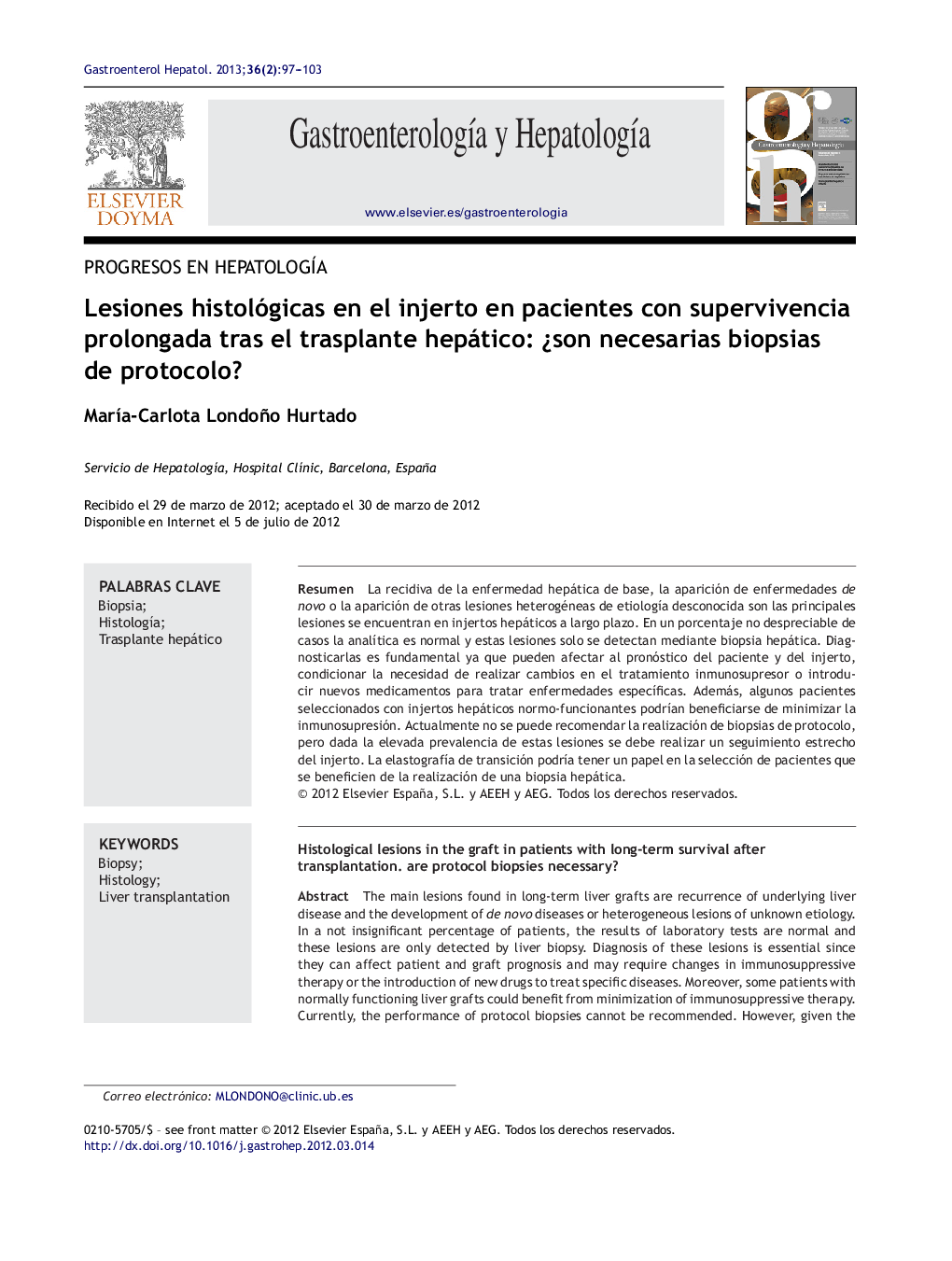| Article ID | Journal | Published Year | Pages | File Type |
|---|---|---|---|---|
| 3288283 | Gastroenterología y Hepatología | 2013 | 7 Pages |
Abstract
The main lesions found in long-term liver grafts are recurrence of underlying liver disease and the development of de novo diseases or heterogeneous lesions of unknown etiology. In a not insignificant percentage of patients, the results of laboratory tests are normal and these lesions are only detected by liver biopsy. Diagnosis of these lesions is essential since they can affect patient and graft prognosis and may require changes in immunosuppressive therapy or the introduction of new drugs to treat specific diseases. Moreover, some patients with normally functioning liver grafts could benefit from minimization of immunosuppressive therapy. Currently, the performance of protocol biopsies cannot be recommended. However, given the high prevalence of these lesions, grafts should be closely monitored. Transient elastrography could play a role in the selection of patients who might benefit from a liver biopsy.
Related Topics
Health Sciences
Medicine and Dentistry
Gastroenterology
Authors
MarÃa-Carlota Londoño Hurtado,
